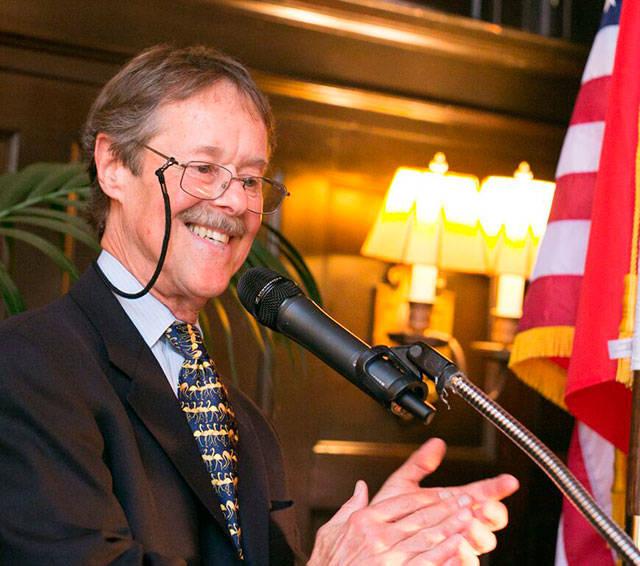Kim Jong-un looked quite cosmopolitan on January 1 as he made his annual New Year’s address to the nation from the comfort of a paneled office, wearing a spiffy Western-style suit and apparently speaking from a teleprompter.
His speech, directed mostly at North Koreans but also at the United States, seemed self-confident and generally non-threatening, in some ways contrasting with the tone and content of the 2018 New Year’s speech. Here are some comparisons between the two speeches.
• Both speeches prioritize the need for rapid improvements in the North Korean economy, with emphasis on science and technology and coal production for the electric power industry. In 2018, Kim said: “The central task facing socialist economic construction this year is to enhance the independence and Juche character of the national economy and improve the people’s standard of living.” Now, in year four of the five-year plan, Kim adds something new: the role of military industry in producing goods for the civilian economy, suggesting a program of military conversion such as China pursued beginning in the late 1980s.
• Kim is extraordinarily upbeat in this year’s address about the prospects for DPRK-US relations. “I want to believe that our relations with the United States will bear good fruit this year … [At the Singapore summit with Trump] we exchanged constructive views and reached a consensus of understanding for a shortcut to removing each other’s apprehensions and resolving the entangled problems.” Kim says he is ready to meet with Trump again, “and will make efforts to obtain without fail results which can be welcomed by the international community.”
• In his 2018 address, Kim said that more nuclear weapons and missiles may have to be produced, but that North Korea already possesses “a powerful and reliable war deterrent. … In no way would the United States dare to ignite a war against me and our country.” Now, however, Kim stresses his commitment to the path of “complete denuclearization” in accordance with the June 2018 joint statement with Trump. “Accordingly, we declared at home and abroad that we would neither make and test nuclear weapons any longer nor use and proliferate them, and we have taken various practical measures.” That statement seems to be a new pledge — not to produce more nuclear weapons.
• But that pledge is now coupled with a warning: If the U.S. persists in sanctions and other pressure tactics, “we may be compelled to find a new way for defending the sovereignty of the country and the supreme interests of the state and for achieving peace and stability of the Korean peninsula.” What that “new way” might be is anyone’s guess. On the other hand, “If the U.S. responds to our proactive, prior efforts with trustworthy measures and corresponding practical actions, bilateral relations will develop wonderfully at a fast pace through the process of taking more definite and epochal measures.” Though Kim did not repeat the longstanding North Korean insistence on denuclearization in phases, other officials did underline that crucial point, as noted in Stimson Center’s North Korean expert Robert Carlin’s analysis.
• This year’s address hails progress in relations with South Korea. Last year Kim looked to a “breakthrough” in relations with South Korea and supported increasing contact with “anyone” in the South “if they sincerely wish for national concord and unity.” This year Kim says he is “very satisfied” with the pace of inter-Korean cooperation, and supports reopening the two signature cooperative projects — the industrial zone and tourist hotel just north of the Demilitarized Zone — that had been suspended. He expresses the hope to “make the Korean peninsula a durable and lasting peace zone” and urges permanently ending the U.S.-South Korea joint military exercises. He proposes that all the parties to the armistice agreement replace it with “a peace mechanism” — perhaps importantly, not with a peace treaty.
I am also struck by the similarities between Kim’s domestic political direction and Mao’s in the 1950s and 1960s. Like Mao, Kim warned in 2018 about bureaucratism and other inner-party problems, demanded a “struggle to establish a revolutionary climate” in the party, and assigned internal security forces the job of carrying out “class struggle” against “hostile elements” in society. This year, Kim gives particular emphasis to closer relations between the Workers Party and the people, “the politics of affection and trust” — what the Chinese used to call the mass line. He even refers to a “great leap forward in socialist construction,” another throwback to Maoism. All these points further underline the importance of economic development in Kim Jong-un’s policy making.
In sum, Kim Jong-un approaches the new year with the wind at his back. He has successfully engaged an unpredictable U.S. president in a summit meeting that avoided specific commitments on denuclearization, yet elevated North Korea’s international stature. He has China’s and Russia’s support for his diplomacy. He believes he has the weapons needed to neutralize the number-one threat to North Korea’s security. And most importantly, Kim’s leadership seems secure. Should Donald Trump sit down with Kim for a second summit, he will find that Kim is an even more difficult opponent than the first time around.
Mel Gurtov, syndicated by PeaceVoice, is Professor Emeritus of Political Science at Portland State University.



